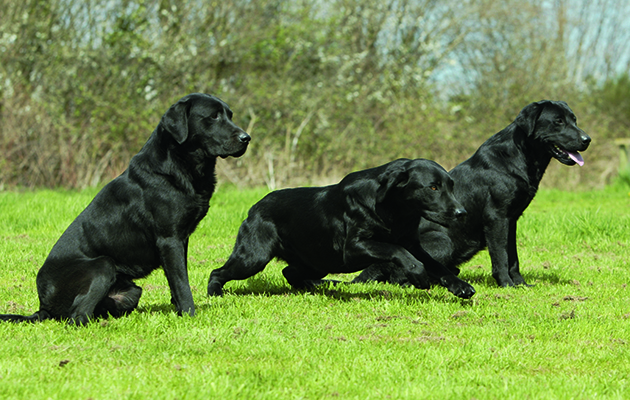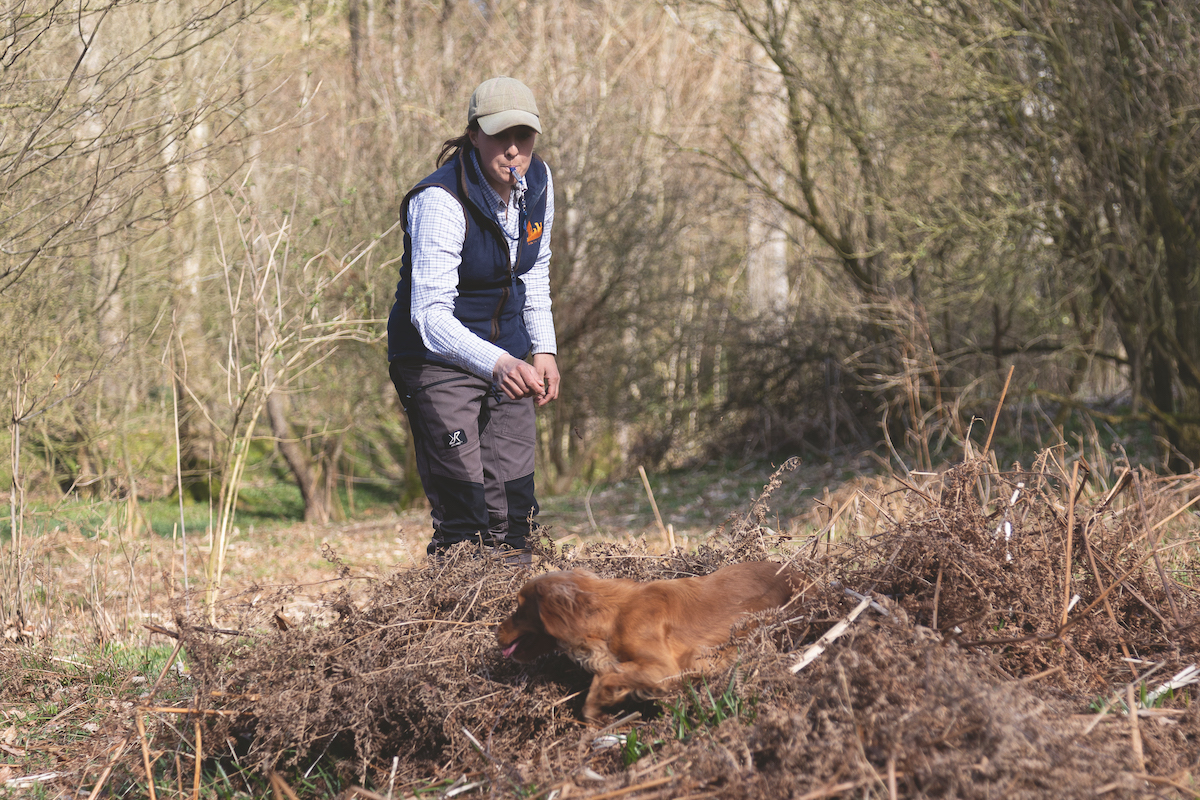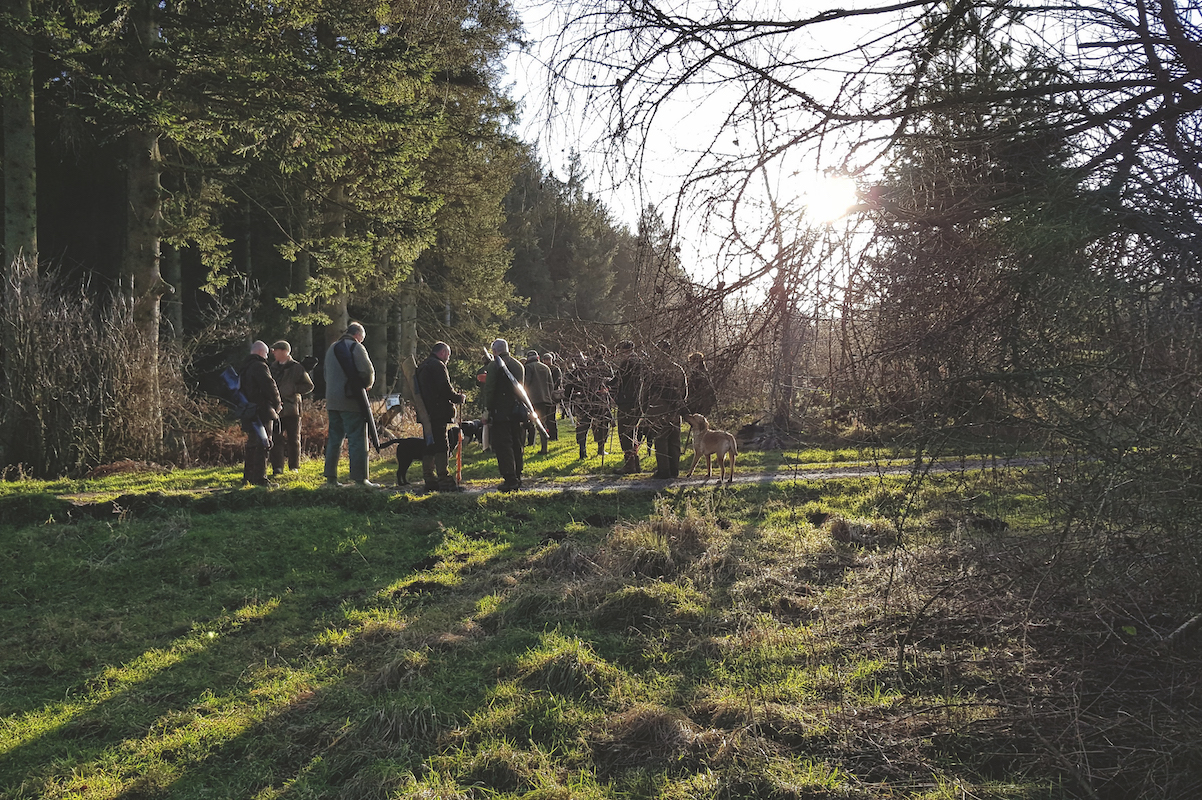How to introduce a new dog to your picking-up team
How to control the inevitable competition can be one issue when introducing a new dog to your picking-up team, says Graham Watkins.

Sit your dogs together and call them individually
At this time of the year many of us are looking to either buy a new pup or a slightly older youngster. I tend to look two years ahead as this is roughly the time that it takes for most trainers to get a dog into the shooting field. One issue that you may come up against is when you have two (or more) dogs which need to work together as a team. So, how can you control the inevitable competition that can occur between the dogs, especially when introducing a new dog to picking-up team?

Go back to basic retrieving before introducing a new dog
Back to basics
If you have previously only owned one dog and have worked it on its own you may have to spend a bit of time just going back to some basic retrieving exercises as you may need to change the commands that you use to send the dog. There are numerous verbal commands that handlers use “get out”, “fetch”, “back and fetch”, “find it”. In truth it doesn’t matter what phrase you use, but if you plan to use more than one dog in a team the individual dogs need to know which of them is being sent for the retrieve and the obvious way to do this is to use their name.
This exercise really isn’t very difficult, but you must make sure that it has been fully understood by the dog before moving on to working two or more together. I prefer to start with some short memory retrieves, drop the dummy and walk the dog away at heel, turn and settle the dog, now instead of just using the “get out” command I use the dog’s name and the command. To start with the dog is just responding to the normal command, but over the next few days I will vary the retrieving exercises with the aim of eventually being able to send the dog just by name. Obviously if you know right from the start that you are going to work your dog in a team you should train this technique during the dog’s initial training.

Use the dog’s name before the “get out” command
Introducing a new dog to picking-up team
The next stage is to up the ante and to induct the new member of the team. This is where you have have your wits about you and more importantly keep calm, especially if one of the dogs is a youngster. It should be said that before you get to this stage that all of the dogs should be steady and be fully grounded in their basic obedience. Believe me, if you have taken any shortcuts this exercise has the potential to unravel in to a riot and you will undo many months of hard work.
To start, sit the two dogs up with the youngster further back and the more experienced dog sitting in front of you. Throw out a dummy, which shouldn’t cause any problems as the dogs should already be totally steady, but just reinforce the “stay there” command to the younger dog. Move back to the young dog and get ready to use your body as a block, when you send the older dog: it be very tempting for the youngster so be ready. He may be totally steady to dummies and game but the movement of another dog being sent out can create an element or competition. Another time to watch him is when the older dog comes back with the retrieve, so once again just step away from the dog and create a bit of distance.

Sit the two dogs with the youngster further back and the older one in front of you
As you can progress with this exercise you can start to send the dogs while they are sitting next to each other, but always watch how the younger dog is reacting. You may already have gathered that this exercise is not only preparing your dogs to work as a team but it is also a good way to instil a high degree of steadiness. Even if you plan to work one dog it is worth trying to find someone that is willing to train with you. Another way to reinforce this is to sit the dogs together and call them individually by name. Start by standing close to the dogs and gradually build up the distance, make sure you do not call the dogs in the same order each time as they will quickly start to anticipate what is going to happen.

Get ready to use your body to block the youngster when you send your older dog
Re-establishing eye contact
One thing than can happen during the shooting season is that the dogs can start to lose some eye contact with the handler as they find what is going on during a shoot day more interesting. If, during the dog’s basic training you had established a good level of eye contact is shouldn’t be too difficult to re-establish it once again. The basic requirement is that you have to make yourself (as a trainer) interesting and the dog understands that he must look at you before he is allowed to go and hunt or pick up a retrieve. The simplest way to build his bond back up again is to sit the dog in front of you, take a few steps back and call the dog to you using your hands to encourage him. As he comes forward you can lift your hands so it brings his eye level up. When you stop he should be sat in front of you and you can just spend a bit of time stroking his chest and under his chin, this again encourages him to lift his head and to look at you. The “off season” is a good time just to go back to basics and rectify a few of the problems that have occurred under calm and controlled conditions.

Lift your hands so your dog brings its eye levels up








